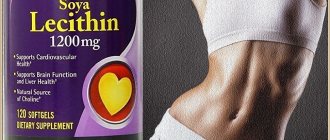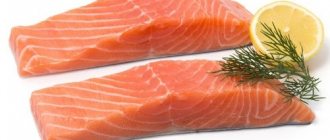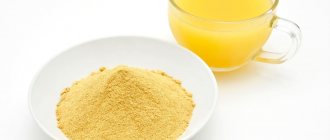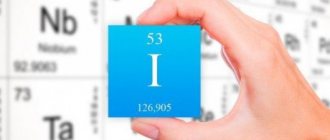What is vitamin E for?
One of the vital vitamins, the deficiency of which leads to systemic disorders in the body. It belongs to the fat-soluble category and is more fully absorbed in combination with vitamins A, C, D, zinc and selenium. It has a pronounced antioxidant property: it inhibits oxidation processes, prevents damage to healthy cells by decay products.
Vitamin E regulates the processes of tissue restoration of the skin, mucous membranes, internal organs, the production of collagen, hormones, and amino acid metabolism. Its normal level ensures timely tissue regeneration, protection from excessive ultraviolet radiation, exposure to carcinogenic substances, premature aging, normal functioning of the reproductive system, and hematopoiesis.
Vitamin E: what are its benefits?
Vitamin E or tocopherol is a substance that takes an active part in cellular metabolism and is responsible for tissue regeneration. Tocopherol protects the body from the negative effects of free radicals and is involved in the process of hematopoiesis. The molecules of the substance surround red blood cells, maintaining their integrity and preventing possible disorders.
Tocopherol improves the body's absorption of other vitamins, especially retinol.
With reasonable consumption, tocopherol can:
- normalize blood pressure;
- increase the body's resistance to infections;
- improve performance;
- reduce fatigue;
- reduce the risk of scars, stretch marks and scars on the skin;
- get rid of age-related pigmentation on the face and body;
- reduce blood sugar levels.
Vitamin E improves the functioning of the reproductive organs. This is especially important during pregnancy or preparation for it. Tocopherol will help you recover faster after childbirth and improve lactation.
Tocopherol is a fat-soluble vitamin; its excess can affect the functioning of the liver, heart, and nervous system. With severe hypervitaminosis, cramps, muscle pain are possible, rapid breathing, general weakness, and fatigue are observed. However, this condition is rare. Much more often, residents of megacities suffer from a lack of this valuable vitamin. Hypovitaminosis is common in people who prefer fast food, eat few grains and vegetables, and smoke excessively.
All types of nuts, including almonds, are rich in tocopherol.
Symptoms of Vitamin E Deficiency
Hypovitaminosis in childhood causes the development of dermatitis, rickets and decreased vision. Long-term deficiency slows down the development of speech, provokes anemia, neurological disorders: coordination of movements, attention.
In adults, the condition of the skin and hair worsens, inflammatory and endocrine diseases occur more often, the cardiovascular system suffers, fertility decreases, women experience menstrual irregularities, and premenstrual syndrome is severe. With severe hypovitaminosis, hormonal imbalance, infertility, and signs of early aging develop. If a vitamin E deficiency is detected, in addition to correcting the diet, it is necessary to take special pharmaceuticals.
Lack of vitamin E in the body: symptoms of deficiency
With a reduced level of tocopherol in the body, the following symptoms and ailments may occur:
- Decreased sexual activity. With a lack of substance, the amount of hormones produced that are responsible for the proper functioning of the genital organs decreases. In such cases, uterine dysfunction and, as a result, infertility may occur.
- Birth of premature babies weighing no more than 3.5 kg. If there is a deficiency of this substance in the newborn’s body, there is a risk of infectious diseases or damage to the visual system.
- Deterioration of the skin condition. The appearance of inflammation, the development of acne and eczema. Loss of skin fineness occurs with a lack of tocopherol, as the rate of cell regeneration decreases.
- Menstrual irregularities, pronounced PMS, loss of milk in young mothers during breastfeeding.
- Increased incidence of acute respiratory viral infections, influenza and other diseases. Decreased general immunity.
- Muscle weakness, fatigue, causeless weakness, depression, insomnia and increased nervousness.
- Decreased hemoglobin levels in the blood, numbness of the limbs, hair loss, loss of visual acuity, loss of orientation.
Long-term vitamin deficiency is rare. Since it comes from food and accumulates in adipose tissue. Deficiency may occur due to disruption of the gastrointestinal tract or improper absorption of fats. Also, the level of the element in the body can decrease with prolonged exposure to ultraviolet rays.
Vitamin E: harm from excess
With an excessive amount of tocopherol, the process of assimilation of other multivitamins may become difficult. It can also cause depression, allergies, decreased attention and drowsiness. Due to the specificity of absorption, an excess of an element, as well as its deficiency, is very rare. The body can independently cope with its excessive amount, excreting it with bile.
The following conditions may indicate an excess of a substance in the body:
- Nausea and vomiting.
- Dizziness and loss of orientation in space.
- Gastrointestinal disorders and diarrhea.
- Allergies, rashes, bruises.
How to take vitamin E correctly
When administered orally, capsules with alpha-tocopherol are swallowed whole without crushing. Drink with enough water. Recommended time of administration is during meals. It is advisable to include foods rich in vitamin E in your diet.
The treatment regimen is individual, depending on the physical condition and age. For prevention, adults are recommended to take 400 mg. vitamin per day. The course of therapy depends on the type of disorder present. It is recommended to take the vitamin cyclically: daily for several weeks, with repeat treatment after a break.
The drug does not affect the ability to drive vehicles and complex equipment, does not cause drowsiness, decreased performance, or changes in the speed of psychomotor reactions.
What foods contain vitamin E
The most preferred option for obtaining this substance is to eat food that contains it. Such sources are balanced products, with the necessary amount of the element to organize the body’s defense against the influence of free radicals and toxins.
- Vegetable oils. The highest concentration of the substance is found in vegetable oils obtained by cold pressing, which have not yet been refined.
- Green parts of vegetables and plants. Tocopherol is found in lettuce, parsley, green onions, green beans, and cabbage leaves.
- Cereals. Rye, wheat, oats, barley, whole grains. Particular attention should be paid to amaranth. Oil is obtained from this plant and is also used as a raw material for making flour. Di&Di Corporation offers a range of amaranth products - from flour and oil to ready-made breakfasts and pasta.
- Legumes and nuts also contain high tocopherol content.
- Fish, poultry and animal meat, as well as dairy products are excellent sources of the vitamin.
- You can also find the necessary element in a wide range of fruits and vegetables.
You can find out about the complete list of products containing large quantities of vitamin E from the table presented.
You should choose the appropriate technology for preparing products containing tocopherol. To preserve the full benefits, choose steaming. Also, small losses of the element occur when baking dishes in the oven. When frying in a pan or grill, the substance is completely lost. This element is resistant to acidic and alkaline environments, so it is preserved during home canning. Tocopherols can be combined with creamy products, chicken eggs, potatoes and vegetables.
Signs of vitamin E deficiency
At the initial stage of vitamin E deficiency, uncharacteristic symptoms occur that are easily confused with other pathologies. For example, a person begins to feel muscle hypotonicity, which leads to weakness in the limbs and numbness.
If measures are not taken to replenish the substance, severe pain may begin and can provoke lameness and uncoordination of movement. If you do not begin to solve the problem of vitamin deficiency, the risk of muscle tissue drying out increases.
Additional symptoms of element deficiency include:
- Deterioration in the functioning of the visual organs. Even with minor strain on the eyes, they quickly become tired, clouding or pain appears.
- Disturbance in the functioning of the reproductive system. May manifest as menstrual irregularities, decreased libido, impotence, or persistent miscarriages.
- Malfunctions in the functioning of the nervous system. This symptom is characterized by increased irritability that occurs for any reason, even a minor one.
- Deterioration of skin condition. This leads to early aging of the skin and the appearance of wrinkles.
- Severe toxicosis during pregnancy.
- Decreased sensitivity.
- Impaired breathing of all tissues.
To accurately know about vitamin E deficiency, it is necessary to conduct a diagnosis. It includes a complete blood count and liver tests.
Foods rich in vitamin E
Nutritionists recommend getting as many vitamins as possible not from medications, but from food. The following products contain the most beneficial element:
- sunflower oil and wheat germ oil;
- sunflower seeds;
- almond oil;
- hazelnut;
- almond;
- olive oil;
- Pine nuts;
- dried apricots;
- peanut;
- salmon;
- olives;
- raw pistachios;
- turnip tops
You can also get enough vitamin E from butter, trout, avocado, pumpkin seeds and crayfish.
Properties of vitamin E
Vitamin E has many benefits for the entire body. Without it, we definitely cannot be healthy and resourceful.
- Improves the functioning of the liver, heart and blood vessels.
- Protects biological membranes of all organs from damage.
- Protects skin from sun rays and cold.
- Makes the skin more elastic.
- Strengthens the walls of capillaries.
- Improves skin elasticity and moisture thanks to tocotrienols and tocopherols.
- Accelerates the healing of scars and scars.
- Strengthens hair and nails.
- Plays an important role in the state of the nervous and endocrine systems.
- Helps hormones be balanced.
- Helps conserve the energy we get from food.
- Improves vision.
- Prevents Alzheimer's disease.
- Increases libido.
- Reduces blood pressure.
For women and men, 15 mg of vitamin E per day is enough. Children from 13 months. up to 8 years - 11 mg. If a woman is breastfeeding - 19 mg. It is important to get tested and consult with a doctor or nutritionist to accurately determine your vitamin dose. You need more vitamin E if you have regular physical activity, reduced potency, constant stress, hard work, recovery period after surgery, infection, inflammation. Excess vitamin E Vitamin E has no toxic effect. Even if you exceed the daily norm by 10 times. But if you exceed the amount recommended by your doctor for a long time, you can get an upset stomach, cramps, nausea, dizziness, and loss of strength. Lack of vitamin E There is practically no shortage of vitamin E. This is true for healthy people. Deficiency can occur in people during illnesses that impair the absorption of fat, or with liver disease. If the body lacks vitamin E for a long time, anemia, heart disease, neurological diseases, brittle nails, and dry skin develop. Also, vitamin E deficiency can occur in people who are often stressed, live in large cities, and eat low-fat foods.
Functions of vitamin E in the body
It has antioxidant activity, inhibits free radical reactions, and prevents the formation of peroxides that damage cellular and subcellular membranes. Stimulates the synthesis of heme and heme-containing enzymes - hemoglobin, myoglobin, cytochromes, catalase, peroxidase. Stimulates the synthesis of proteins (collagen, enzymatic, structural and contractile proteins of skeletal and smooth muscles, myocardium), protects vitamin A from oxidation. Inhibits the oxidation of unsaturated fatty acids and selenium (component of the microsomal electron transfer system). Inhibits cholesterol synthesis.
Benefits of taking vitamin E
Vitamin E is an antioxidant that helps protect the body from free radicals. Free radicals are high-energy molecules with an unshared electron. The body produces them naturally during many processes, such as converting food into energy. Free radicals can enter the body from environmental factors such as pollution, sunlight or smoke. Free radicals can cause oxidative stress, which leads to cellular damage and aging. Until now, researchers believe that oxidative stress and cell damage play a role in the following diseases, such as:
- cancer;
- Parkinson's disease;
- Alzheimer's disease;
- diabetes;
- cardiovascular diseases;
- age-related macular degeneration and cataracts.
Researchers believe that antioxidants, including vitamin E, may help neutralize free radicals and their effects, making them less reactive. According to research, vitamin E may improve skin health by reducing collagen breakdown and free radical damage in the skin. In addition to its role as an antioxidant, vitamin E also helps support the immune system. Additionally, vitamin E may increase the expression of certain enzymes that dilate blood vessels. Dilated blood vessels are less likely to form blood clots. Vitamin E is a fat-soluble vitamin, so people should be sure to eat foods rich in vitamin E with fat to improve its absorption.
Vitamin E and pregnancy
During pregnancy, the need for vitamin E increases slightly and amounts to 15–17 mg per day. Hypovitaminosis E in pregnant women is manifested by slowly increasing general weakness, muscle pain, and involuntary miscarriage is possible. Taking high doses of vitamin E during pregnancy doubles the risk of stillbirth, can lead to low birth weight babies, increases the incidence of cardiovascular defects, does not prevent pregnancy loss due to miscarriage, and does not prevent the development of serious pregnancy complications such as preeclampsia and eclampsia .
Metabolism of Vitamin E
Vitamin E enters the gastrointestinal tract as part of fats, the hydrolysis of which by lipase and esterase leads to the release of the vitamin. Then it is absorbed, enters the lymphatic system as part of chylomicrons and then into the blood. In the liver, vitamin E binds to tocopherol-binding protein, to which alpha-tocopherol has the greatest affinity. Other tocopherols undergo conjugation in the liver and are excreted from the body in bile.
Tocopherol-binding proteins transport tocopherol into the bloodstream as part of VLDL (very low density lipoprotein). In the blood plasma, tocopherol is exchanged between VLDL and other blood lipoproteins. Vitamin E enters extrahepatic tissues as part of LDL (low-density lipoproteins), which are captured by the corresponding receptors. The structural organization of phospholipids in cell membranes is capable of recognizing the chiral form of RRR-a-tocopherol, due to which the vitamin is retained in the membrane, where it performs its main function (protecting the cell membrane from oxidative stress). Vitamin E is deposited in the adrenal glands, pituitary gland, gonads, adipose and muscle tissue, red blood cells, and liver. Metabolized in the liver to derivatives with a quinone structure (some of them have vitamin activity). Excreted with bile - more than 90% (a certain amount is reabsorbed and undergoes enterohepatic circulation), by the kidneys - 6% (in the form of tocopheronic acid glucuronides and its gamma-lactone).











